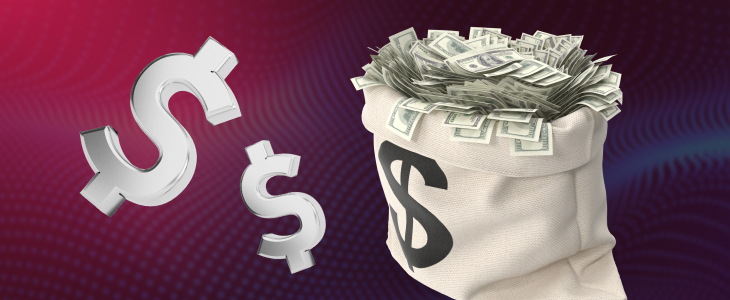The United States dollar is back in the spotlight in the foreign exchange market, strengthening against other major global currencies. This surge is driven by factors such as the Federal Reserve’s monetary policy, higher interest rates, and long-term effects of trade interventions like tariffs. As tariffs disrupt economic balance sheets, investors flock to the dollar as a safe haven. For traders, this creates both risks and opportunities, making it crucial to employ effective Forex strategies to navigate the stronger USD and capitalize on market movements.
For the trader, this movement is a risk and an opportunity. Whether trading on La plate-forme MetaTrader 4, doing CFD trading, or further out on larger online trading sites, the dollar’s strength impacts each trade. In this article, we’ll explain why the dollar has strengthened, how tariffs affect market conditions, and what options are available to traders in this new landscape.
Forex Strategies for Understanding the USD Resurgence
Today’s currency strength is not accidental, but rather a result of global economic shifts. One major contributor has been the monetary policy of the U.S. Federal Reserve. Since interest rates on the dollar are also higher compared to other central banks, it provides investors with better returns.
Besides that, geopolitics have moved further in the direction of a stronger dollar, as it reasserted itself as the safe-haven currency, especially in light of trade wars and tariff uncertainty.
Top 5 Successful Forex Strategies in a Strong Dollar Age
When the dollar is fighting an uphill battle, there is no option but to make some changes. The following are the forex strategies that can be adopted under such a scenario:
- Trend Following: You can place your trades in harmony with the existing trend of USD weakness, especially in major euro crosses such as EUR/USD and GBP/USD. The strategy is effective when the general market sentiment and macroeconomic setup consistently support the dollar.
- Hedging: Hedging is used to mitigate exposure by utilizing hedging instruments. It not only helps guard against adverse shocks that tariffs can cause but also allows traders to hold their ground during volatile markets.
- Short-term Breakouts: Examine the impact of breakouts following tariff announcements and news releases to capitalize on the diverted currency pair volatility. The aggressive response to economic news can enable traders to capitalize on such short-term yet profitable opportunities.
- Diversification: Invest in multiple forex pairs and commodities to balance the risks created by a strong USD. Through diversification, some of the money can be lost on one channel of business but regained through another, depending on which is performing better, so the portfolio remains stable.
To FXcess traders, it will be easy to handle the forex strategies. It enables traders to access diversified markets and high-performance execution services, while also providing tools to manage volatility.

Forex Strategies for Risk Management in Tariff-Driven Markets
The following risk management models are being implemented by traders in tariff-driven markets:
Stop-Loss Placement
Sophisticated traders have used stop-loss methods successfully for:
- Prevention of erosion of capital due to potential tariff-related volatility.
- Maintenance of consistency of long-term forex strategies.
- Bias-free automation.
Position Sizing
Systematized capital distribution among portfolio managers is set up to:
- Diversify positions in multiple currency pairs.
- Hold over-risk on single tariff-sensitive trades.
- Guarantee return preservation irrespective of widespread swings.
News Tracking
Institutions and minds behind trade rely on real-time news feeds to:
- Track tariff deals and global trade disputes.
- Preempts market-making news wherever possible.
- Move before volatility erupts.
Currency Hedging
Hedging configurations are most prevalent:
- Hedge against USD risks by hedging them against safe-haven currencies like CHF or JPY.
- Invest in commodity-related assets (e.g., gold) as a hedge.
- Exposure but with limited downside risk.
Emotional Control
Trading desks and individual investors emphasize discipline by:
- Playing along with pre-specified rules when the volatility is out of proportion.
- Avoiding impulsive entries and exits.
- Safeguarding capital by following tried and tested ways.

Long-Term Outlook for the U.S. Dollar and Forex Markets
The future of the U.S. dollar will depend on how the nature of trade, tariffs, and the central banks of various countries change over the next ten years. The factors that draw attention to this outlook include:
Trade and Tariffs
- Cases of tariff controversies will continue to reinforce the USD’s status as a haven.
- Easing tension on the trade would enable the emerging market currencies to recover.
- Capital flows and investors’ confidence will be affected by bilateral and multilateral trade agreements.
Monetary Policy
- The Federal Reserve’s stance on interest rates and inflation will remain the primary factor in the dollar gaining momentum.
- Monetary courses that diverge may lead to long-term rebalancing of foreign exchange.
International Safe-Haven Condition
- When there is uncertainty in the geopolitical world, the US dollar should be the primary safe-haven currency.
- The Swiss franc and gold may be the second choice, but because of the liquidity of the dollar, it will always be the first choice.
- Institutional investors will continue to be exposed mainly to dollar-denominated assets.
Conclusion
The comeback of the US dollar is a testament to the complexity of international trade, monetary policy, and tariff impacts. To traders, even though this is trying, it also offers multiple avenues through which one can earn money as long as they pursue the right approaches. Volatility can be handled by surfing the trend of trend-following methods, tight risk control, and portfolio diversification.
Moreover, through a platform like FXcess, traders can make firm decisions. Equipped with solid trade execution, a wide variety of trading instruments, and trade support of CFDs and other products, FXcess is a valuable partner to any trader who wants to bank on USD-driven moves in the global forex market.
FAQs
1. What relationship does there need to be between tariffs and their effect on forex markets?
Tariffs disturb the balance of trade, depreciate export-dependent currencies, and fuel an asset investor preference shift toward the US dollar.
2. Which currency pairs are most sensitive to the strong US dollar?
The most sensitive pairs are the EUR/USD, GBP/USD, and USD/JPY, and commodity-indexed pairs, i.e., AUD and CAD.
3. Can I trade USD volatility with MetaTrader 4?
La plate-forme MetaTrader 4 provides high-level charting, indicators, and execution features, which allow the trader to function efficiently in unpredictable market regimes.
Disclaimer:
This information is not considered as investment advice or an investment recommendation, but instead a marketing communication. FXCess is not responsible for any data or information provided by third parties referenced, or hyperlinked, in this communication.
